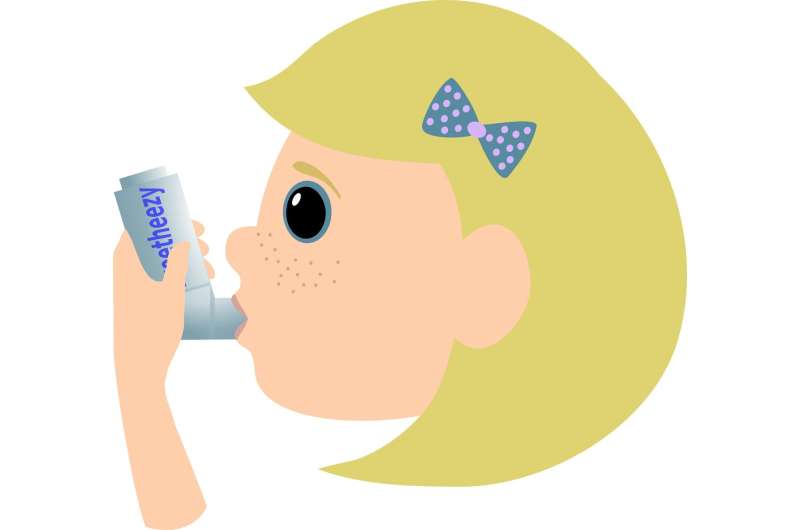Higher exposure to bisphenol A in the womb linked to increased risk for asthma and wheezing in school-age girls

An analysis of data from more than 3,000 mother-child pairs from six European countries indicates that prenatal exposure to bisphenol A may have negative effects on respiratory health in school-age girls. The results of a study led by the Barcelona Institute for Global Health (ISGlobal), an entity supported by the la Caixa Foundation, have just been published in the journal Environment International.
Bisphenols are chemical substances used in the manufacture of plastics and resins found in many consumer products, such as food cans, reusable bottles and toys. The most well-known is bisphenol A (BPA), a known endocrine disruptor used widely in the manufacture of food containers and the interior coatings of such recipients. The European Chemicals Agency (ECHA) included BPA on its list of substances of "very high concern" in 2017. Since then, some countries have limited its use, leading some manufacturers to replace BPA with other bisphenols.
Since it is known that bisphenols are present in maternal milk and that they can cross the placental barrier, the aim of the authors of the study published today was to discover whether prenatal exposure to these chemical compounds is associated with respiratory health problems in later years. The authors studied urine samples taken during pregnancy from more than 3,000 women from six European countries (Spain, France, Greece, Norway, the Netherlands and the United Kingdom) collected between 1999 and 2010 and data on the respiratory health of their offspring collected years later through questionnaires and spirometry.
Analysis of the urine samples revealed a high prevalence of BPA, which was found in 90% of the samples. The other bisphenols studied were, however, less prevalent at the time these samples were collected: the Netherlands was the only country where a notable presence of other bisphenols was detected among the study participants (bisphenol F in 40% of the samples and bisphenol S in 70%). This finding was probably due to the early switch to replacements for bisphenol A in that country.
The results of this study revealed an association in girls between concentrations of bisphenol A in maternal urine during pregnancy and an increased risk of asthma and wheezing at school age (a twofold increase in the concentration of bisphenol A was linked to a 13% higher risk of respiratory symptoms). This association was not, however, observed in boys or in the case of the other two bisphenols studied. Neither were any associations observed between prenatal bisphenol A exposure and lung function at school age.
"Our results are in line with those of earlier studies, which have also reported that bisphenol A has a negative impact on respiratory health in childhood. We believe that the effect may be due the fact that bisphenols can cross the placental barrier and interfere with the child's respiratory and immune systems during the developmental phase," explains Alicia Abellán, ISGlobal researcher and first author of the study.
Talking about the differences observed between girls and boys, Maribel Casas, ISGlobal researcher and last author of the study, says, "Bisphenols are endocrine disruptors and can interfere with sex hormones. As our findings suggest, this may give rise to differences in the effects they have depending on the sex of the person exposed."
More information: Alicia Abellan et al, In utero exposure to bisphenols and asthma, wheeze, and lung function in school-age children: a prospective meta-analysis of 8 European birth cohorts, Environment International (2022). DOI: 10.1016/j.envint.2022.107178

















